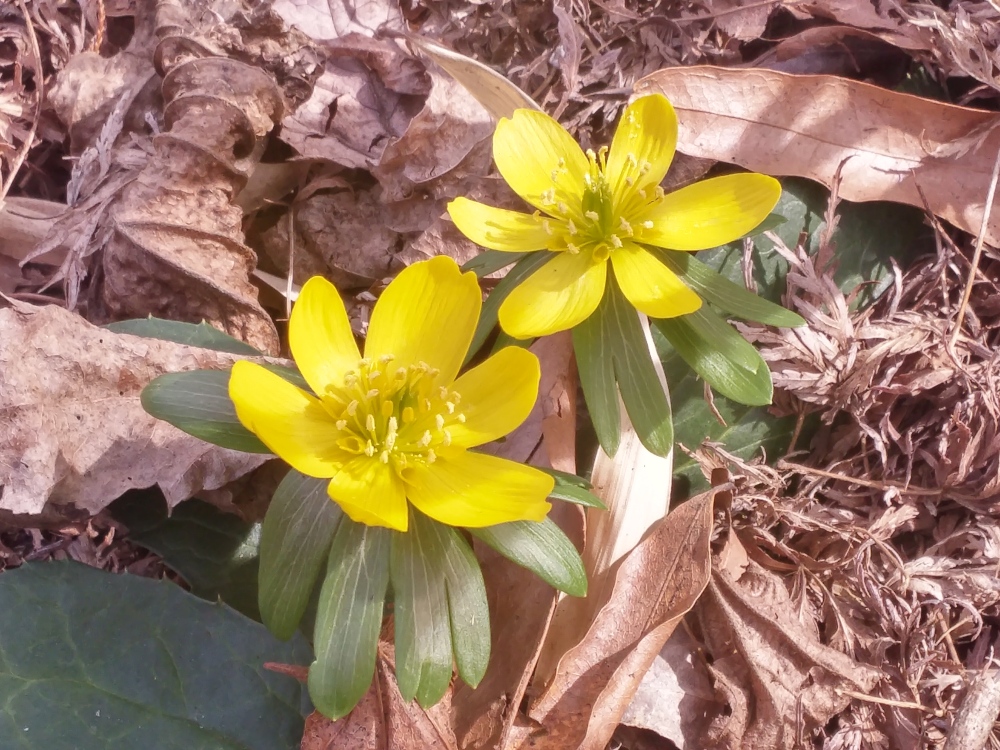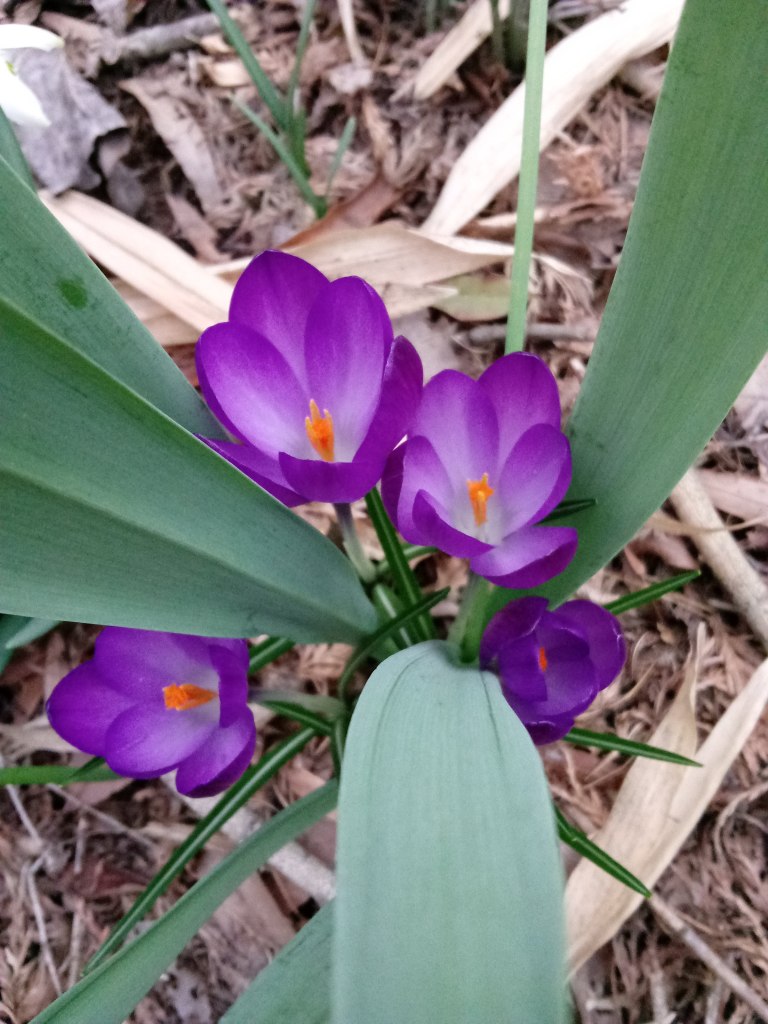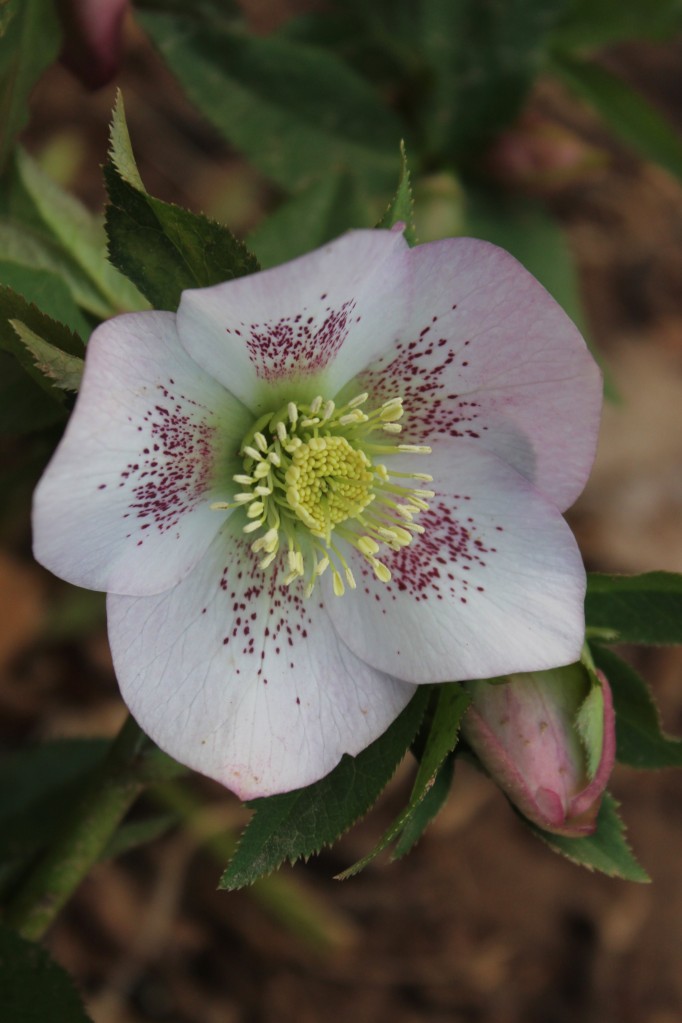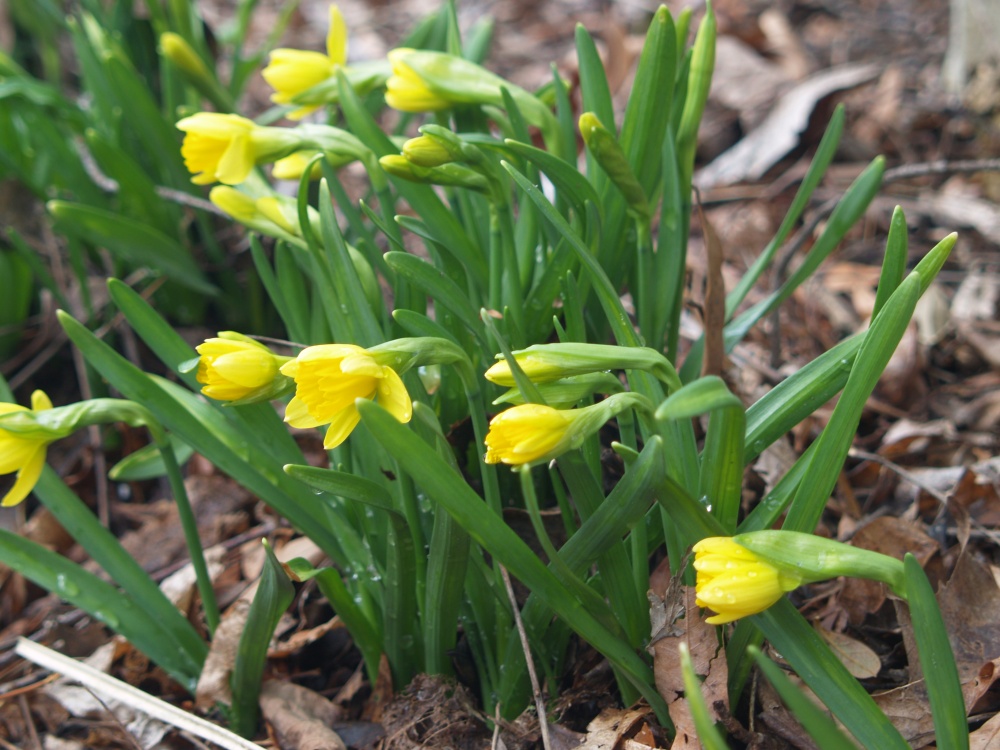Somehow, a small patch of Winter aconites was further reduced, likely when a rhododendron and divisions of Carex ‘Evergold’ were planted in the vicinity. When bulbs are unearthed while planting, they are immediately replanted, but certainly some are not seen when a clump of soil is dug so that they are buried beneath the rhododendron. Too few of the aconites were planted from the start, which is consistently a problem that I purchase too few of a variety of bulbs rather than a quantity that will make a show the first year. Yes, they will multiply and eventually make a show, if tiny bulbs are not dug up by the foolish gardener. In any case, down to a single small clump of Winter aconite, I am pleased that these appear to be spreading despite my efforts.
Too few of the aconites were planted from the start, which is consistently a problem that I purchase too few of a variety of bulbs rather than a quantity that will make a show the first year. Yes, they will multiply and eventually make a show, if tiny bulbs are not dug up by the foolish gardener. In any case, down to a single small clump of Winter aconite, I am pleased that these appear to be spreading despite my efforts.
In the vicinity of the aconites are also snowdrops, which are multiplying nicely, and a few crocus that remain after being dug by the gardener, or harvested by squirrels. This spot, by the intersection of the driveway and front walk, is often passed, and thus flowers are frequently enjoyed through late winter.
Worthy of mention, in the same small area, several cyclamen that were forgotten under leaf clutter from a ‘Seriyu’ Japanese maple that arches over head, then discovered in flower a year ago, have been disturbed and disappeared. Probably forever, and likely injured while the finely cut leaves of the maple were raked up. I am shamed by the destruction, and the waste of money.
After a slow start, flowers of hellebores have advanced rapidly following several seventy degree days in late February. While flowers of varieties are typically spaced from mid January into early March, chilly temperatures into mid February have compressed the period of blooms. After weeks of impatient waiting, flowering of many hellebores at once is delightful, though if my voice mattered I would prefer more blooms earlier in winter.
I hear reports that early narcissus are flowering closer to town, and on rare occasions ‘February Gold’ will bloom in this garden before mid March. This year it is on schedule to flower after another week, and perhaps a bit later with chilly temperatures in the forecast.
Seventy degree days also pushed tightly wrapped buds of pieris and paperbushes to swell quickly and surprisingly into flower. I expected to wait another week, or longer, but here they are. Some flower buds of paperbushes more exposed to winter breezes were injured by zero degree January temperatures, but damage is minimal and there is no injury to stems. These are particular late winter favorites, and after winters in the past when sub zero temperatures caused extensive damage, it is a relief when flowers confirm that little harm was done.
Although I have been getting tired of everyone’s snowdrops, the crocus are not so tiresome. People have not been showing too many of them so far, and they are something that I would actually want to grow more of.
With few flowers in the winter months snowdrops are almost a necessity, but you’re correct that there are a few too many photos of them. I wish that I had more crocus to photograph, but the squirrels make certain they don’t take up too much space.
Perhaps I should post pictures of bougainvillea until I get told to not post anymore. . . Although, I would probably get tired of them first.
The area of the country where snowdrops are grown is far greater than bougainvillea territory, so I’m pretty certain you’re outnumbered. England alone will post thousands more snowdrops photos.
Outnumbered, but not outdone! Snowdrops are only ‘so’ fascinating. They are interesting for a while, (and I DO happen to like white!), but they are ‘only’ white and green! Bougainvilleas are so much more colorful (although, sadly, they are not very pretty in white.), and they are so much more variable!